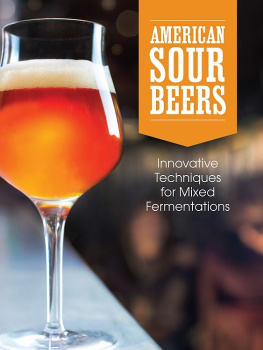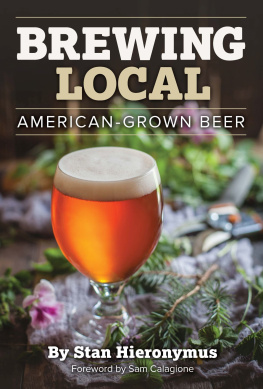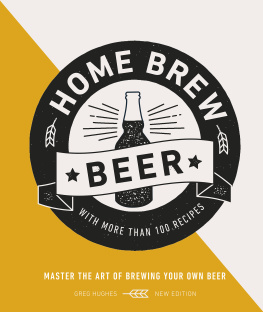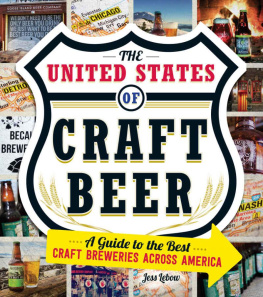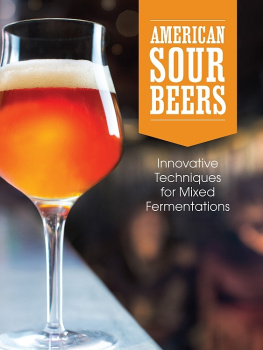A DVANCE P RAISE FOR
T HE H OMEBREWERS A LMANAC
Its amazing how quickly The Scratch Way has come to mean a particularand naturalway of brewing for a growing number of beer fans. The Homebrewers Almanac is a perfect introduction into brewing for experienced foragers and an equally delightful introduction into foraging for experienced brewers.
Stan Hieronymus, author of Brew Like a Monk and Brewing Local
While the folks at Scratch Brewing did not invent the concept of brewing with alternative ingredients, they have elevated botanical and foraged beers to a level that commands deserved respect amongst the ranks of craft brewers. Just like their beers, The Homebrewers Almanac represents an artful, creative presentation that allows the ingredients to speak for themselves. This one-of-a-kind book is a worthy addition to any brewers collection.
Matthew McCarroll, PhD, Professor of Chemistry and Biochemistry and Director of the Fermentation Science Institute, Southern Illinois University Carbondale
The Homebrewers Almanac is the most meaningful and significant statement made to date in the movement toward creating beer thats inextricably linked to a place and time. In an age where technological advances have made it possible to brew the same beer virtually anywhere on Earth, the knowledge and practical wisdom that Josephson, Kleidon, and Tockstein have amassed is critical to restoring the important connection between beer and our own immediate surroundings.
Jeffrey Stuffings, founder of Jester King Brewery


Copyright 2016 by Marika Josephson, Aaron Kleidon, and Ryan Tockstein
All rights reserved
For information about permission to reproduce selections from this book, write to Permissions, The Countryman Press, 500 Fifth Avenue, New York, NY 10110
For information about special discounts for bulk purchases, please contact W. W. Norton Special Sales at specialsales@wwnorton.com or 800-233-4830
Book design by Endpaper Studio
Cover design and illustration by Philip E. Pascuzzo
The Countryman Press
www.countrymanpress.com
A division of W. W. Norton & Company
500 Fifth Avenue, New York, NY 10110
www.wwnorton.com
978-1-58157-349-7 (pbk.)
978-1-58157-561-3 (e-book)

To everyone in our community who has helped us create these beers and this place

CONTENTS
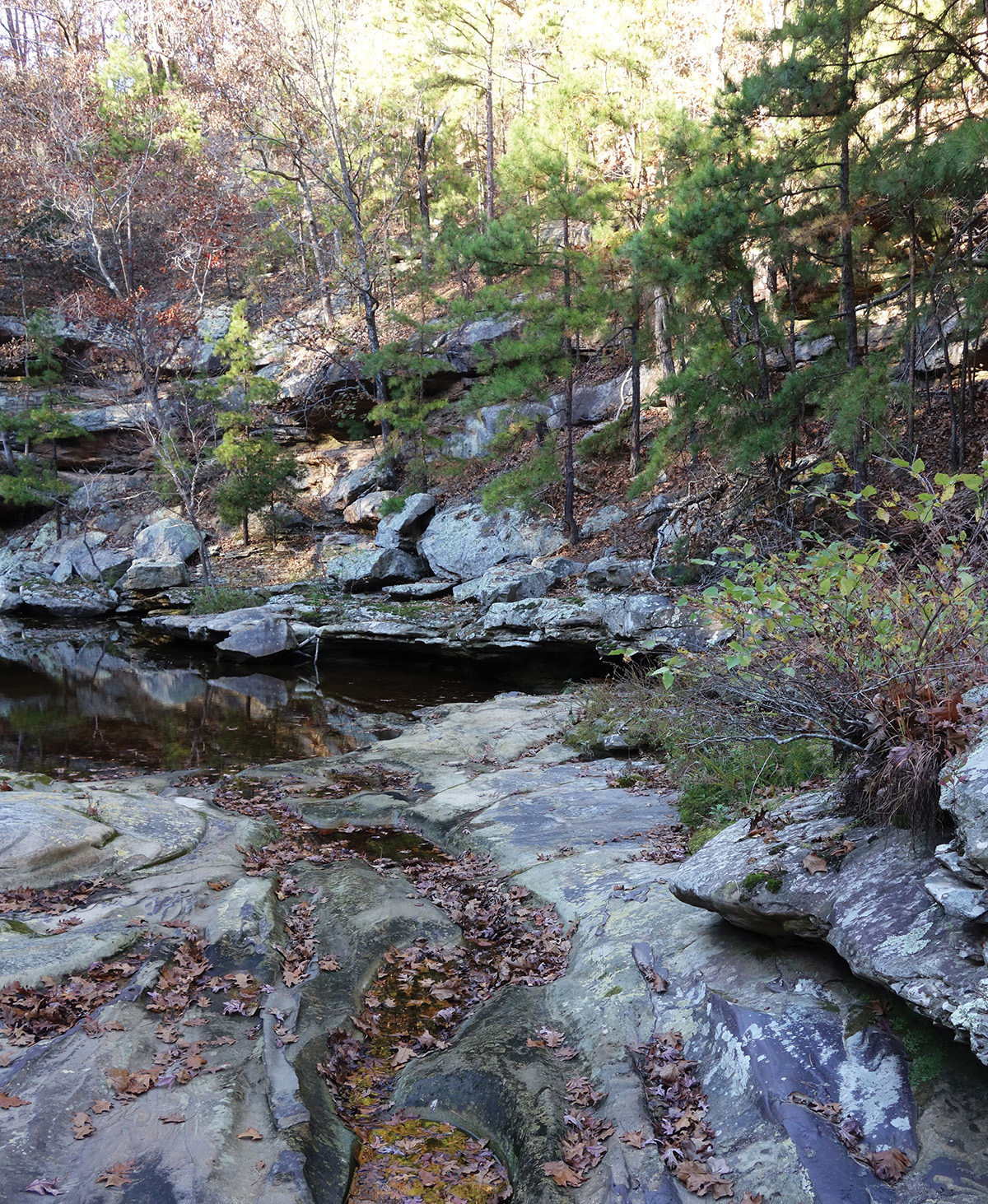
The woods enchant us: every pine sapling with its outsized needles, every fallen oak tree and its mushroom denizens, every bitter green leaf and tannic root, every paw paw hidden beneath the fall leaves. The three of us spend a lot of time in the woodsnot just to make beer, but because the woods speak to us. We take its pulse; we respect its force. It has a special language we sometimes hear and more rarely speak.
Brewing an elixir with leaves, bark, nuts, and roots from familiar trees, each with its own story, is incantatory. The adventure offered by following the guidance of medicine men and women, ancient homebrewers, and our farming ancestorsall the while taking divergent paths to find surprising new flavorsis the intoxicating heart of why we make beer. Many of the plants from which we harvest have been in the woods longer than we have been alive, and will be here well after weve gone. Carrying on the heritage of ancient traditions brings us closer to the long life cycle of the plants we briefly live with side-by-side.
The techniques in this book have been developed over the last five or six years that weve been brewing together. They are a time-stamp of our current understanding of several dozen plants after hundreds of brews and experiments. In the recipes included here you will find information about how people have traditionally used those plants and how weve experimented with them, as well as tips on harvesting and preserving. In some cases we mention edible parts of plants we have yet to brew with ourselves. We hope that after understanding the techniques in this book you can try some of those suggestions at home. We also hope that you will use those techniques on the plants, trees, leaves, herbs, roots, and fruit that we dont mention in this book but that exist in your part of the world.
We brew with what we have around us. We make beers that taste and smell like this place. We dont order fruit extracts to make fruit beers; we use persimmons, apples, peaches, elderberries, and other whole fruits from our woods and fields. We do this in part because of the high quality of these ingredients and the ease of harvesting them only miles (sometimes yards) from our brewing stand, and in part as a statement about industrial agriculture. We support our local farmers and our local food systems. We make small-scale beer that supports tight-knit communities.
We hope that after reading this book you will start to take the pulse of the life around you and bring it into your brewing process. Perhaps in so doing you will feel more connected to the incredible diversity of nature that existsoften precariouslyall around us.
We hope the woods will enchant you.

Just as cooking with fresh seasonal produce enhances the flavors in food, the same is true of beer. Freshly harvested plants, from peaches to pecans, are leaps and bounds more flavorful and aromatic than most internationally sourced supermarket-bought produce, since very often those plants are bred for long voyages and picked before theyve fully developed. To put it in beer terms, would you prefer to brew a beer with a hop that was picked before it was ready and shipped under unknown temperature conditions for an unspecified period of time, or with a hop freshly picked off the bine from somewhere near your home? Flavor and aroma in any plant works exactly the same way it does in hops; picking, shipping, and seasonality will dramatically affect the quality of the beer you make.
Chances are, most people reading this book have access to freshly picked ingredients from gardens or regional farms, even if they live in the middle of a big urban center. We are lucky to be living in a time in which people are finding their way back to the landeven if the land is stacked on a wall or planted on a rooftop gardenand farmers markets are proliferating. Nearly everyone is a walk, bus ride, car trip, or train stop from fresh, seasonal produce.
Farmed plants are familiar to most people, but the idea of foraging may feel somewhat more foreign, particularly for anyone living in a city or suburb. Where do you start with foraging if youve never done it before? How do you know whats safe and whats toxic? How do you identify plants that look similar but have different, possibly poisonous effects? We have included a variety of foraged plants in this book, from the simplest and most easily identifiable to those that are slightly more difficult to identify and procure. A dandelion is a dandelion whether it grows in your front yard or in a field. You may not have thought twice about the juniper on your block in Phoenix, or the lavender that lines your sidewalk in Seattle, but they grow ubiquitously in many cities and suburbs, are easy to identify, and can all be used in beer.




